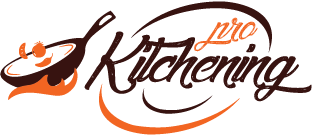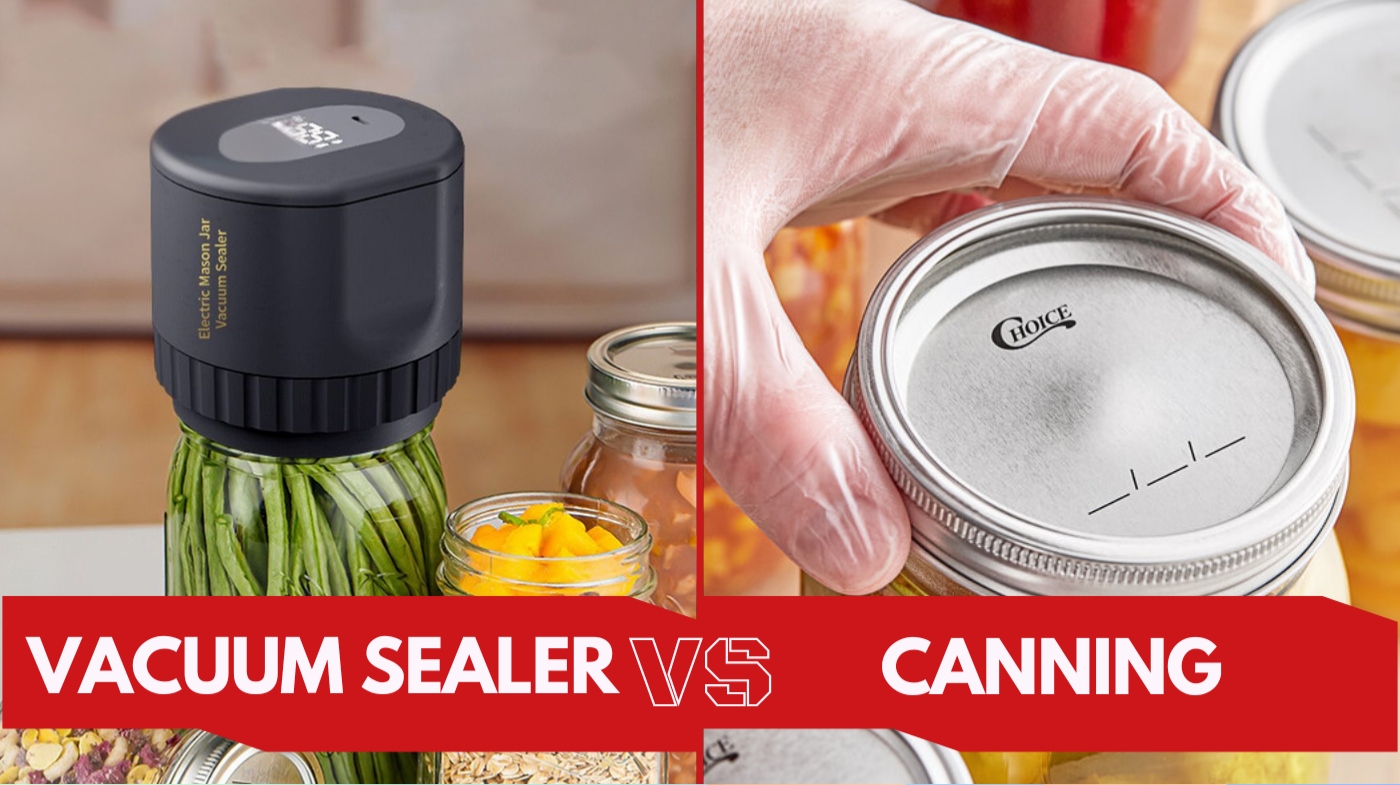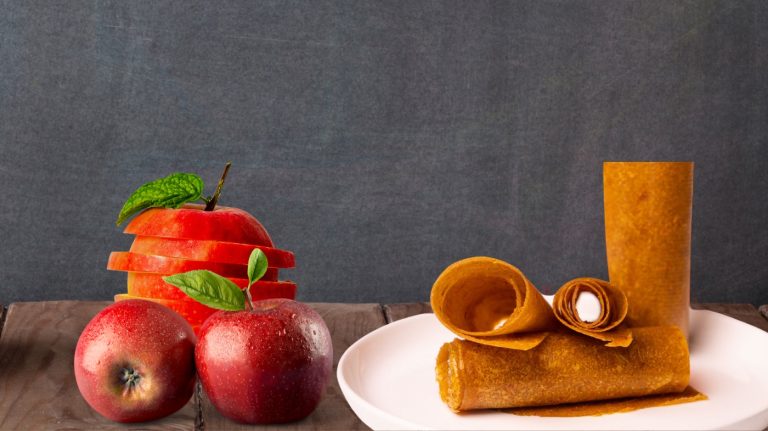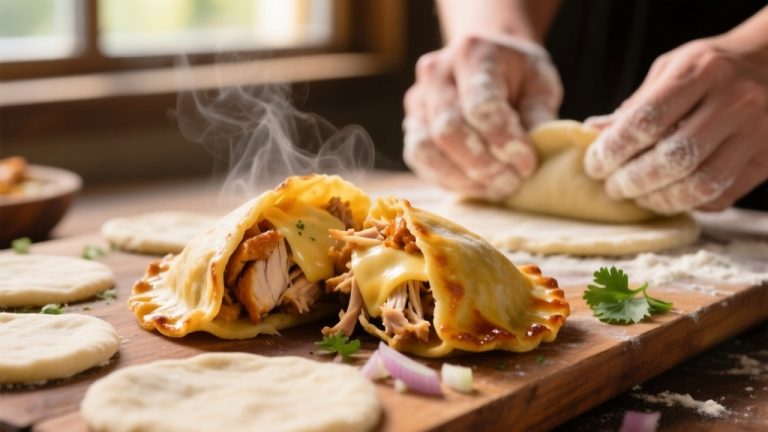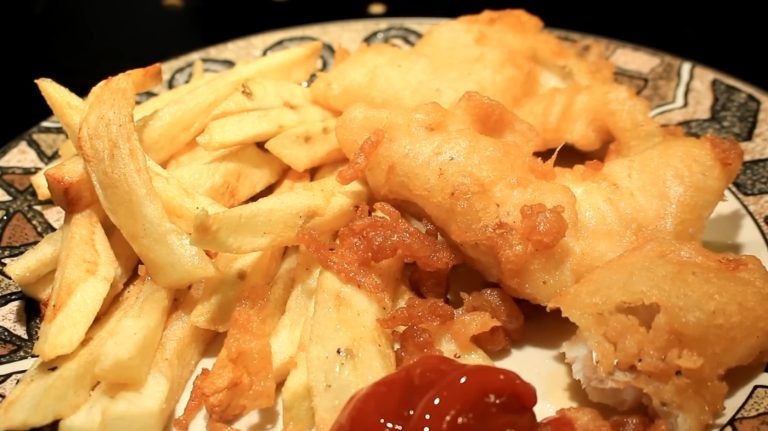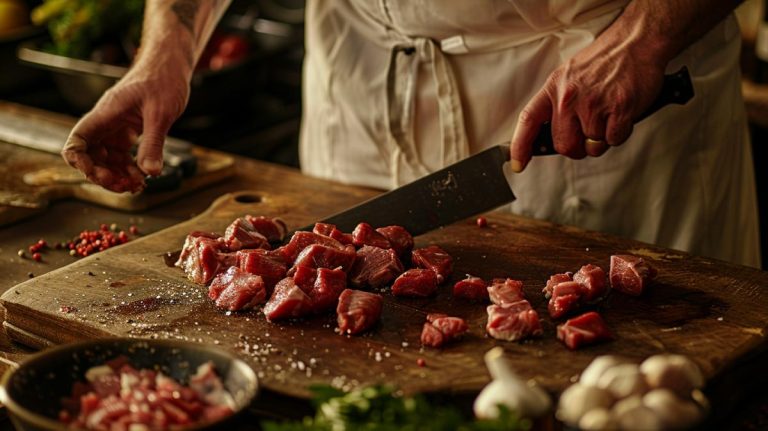Mason Jar Vacuum Sealer VS Canning: Which One Suits You?
When choosing between a mason jar vacuum sealer and traditional canning, consider your needs. Vacuum sealing extends shelf life for dry goods and preserves freshness, but it requires refrigeration.
Canning, on the other hand, kills bacteria through high-heat sealing, making it perfect for long-term storage of high-acid and low-acid foods.
Each method has its strengths and ideal applications. Explore further to understand which technique can best fit your food preservation goals.
Key Takeaways
- Mason jar vacuum sealing extends shelf life but requires refrigeration, making it suitable for short-term storage of dry goods and herbs.
- Canning involves high temperatures to kill bacteria, creating a vacuum seal that preserves food for 1 to 30 years without refrigeration.
- Vacuum sealing is ideal for dry items like cereals and nuts, while canning is best for high-acid and low-acid foods like fruits and vegetables.
- Canning maintains essential nutrients and is cost-effective for long-term food storage, while vacuum sealing is efficient for meal prep and reducing waste.
- Both methods enhance food safety, but canning is more effective for long-term preservation and emergency preparedness.
Understanding Canning and Vacuum Sealing
When you explore food preservation methods, understanding canning and vacuum sealing is vital.
Canning involves heating food to high temperatures to kill bacteria, creating a vacuum seal that preserves items like fruits, vegetables, and meats for years. Depending on conditions, canned goods can last from one to thirty years.
Dry canning is a method that can also be used for preserving various dry foods, although it has different safety considerations. Additionally, effective canning requires proper sealing techniques to ensure long-lasting preservation.
On the other hand, vacuum sealing removes air from containers, inhibiting microbial growth without heat. While it’s excellent for maintaining the freshness of dry goods and herbs, vacuum-sealed foods require refrigeration, limiting their shelf life. A strong suction power in vacuum sealers is crucial for achieving optimal sealing results.
Vacuum sealing effectively preserves freshness by removing air, but requires refrigeration, which can limit shelf life.
Canning guarantees safety through heat, while vacuum sealing slows spoilage without killing all pathogens. Each method has unique equipment and suitability, making your choice dependent on the food type and desired storage duration.
Advantages of Vacuum Sealing
Vacuum sealing offers several advantages that make it a preferred method for food preservation. By removing oxygen, this technique greatly enhances food longevity and quality.
Here are three key benefits:
- Extended Shelf Life: Foods stay fresh longer as aerobic bacteria and mold growth slows down.
- Efficient Storage: Vacuum-sealed jars occupy less space, keeping your pantry organized and making room for more items.
- Preservation of Flavors: Sealing locks in moisture and flavors, ensuring that your food tastes just as good as when it was first sealed. Additionally, vacuum sealing provides cost-effective preservation by preventing bacterial growth and mold, which helps maintain the integrity of your food.
This method not only enhances food safety but also streamlines meal preparation, making it a valuable tool in your kitchen.
Benefits of Canning
Canning presents numerous benefits that make it a reliable method for food preservation, particularly in maintaining nutritional quality. It preserves essential nutrients and extends shelf life, making it a practical choice for your pantry.
Here’s a quick overview of the benefits:
| Benefit | Description | Importance |
|---|---|---|
| Nutritional Preservation | Maintains minerals and vitamins in foods | Keeps food healthy and nutritious |
| Convenience | Easy to store and prepare | Saves time in meal prep |
| Long-term Preservation | Lasts from 1 to 30 years when stored properly | Reduces food waste and spoilage |
| Cost-Effectiveness | Generally cheaper than fresh produce | Budget-friendly for households |
| Emergency Preparedness | Ideal for disaster relief and food shortages | Guarantees reliable food supply |
Canning truly offers a versatile solution for food storage. Additionally, canned foods can retain many nutrients comparable to their fresh counterparts, making them a valuable option for balanced nutrition.
Moreover, canning can improve water quality by ensuring that preserved foods are free from contaminants, much like how refrigerator water filters enhance drinking water safety.
Suitable Foods for Each Method
Choosing the right method for food preservation can greatly impact the quality and longevity of your stored items.
Here’s a quick guide to suitable foods for each method:
- Canning: High-acid foods like fruits and pickles thrive in water bath canning. It is essential to use properly-sized oxygen absorbers to enhance the shelf life of sealed products.
- Pressure Canning: Low-acid options, such as meats and vegetables, need this method for safety.
- Vacuum Sealing: Dry cereals, nuts, and dehydrated fruits benefit from reduced oxygen exposure. Vacuum sealing preserves dry or powdery ingredients effectively, ensuring they remain fresh and free from harmful particles.
Canning excels with high-acid foods, while vacuum sealing is ideal for dry goods. Some foods, like oily and high-moisture items, aren’t suitable for either method alone.
Always consider food safety and the preservation method to guarantee your stored items remain fresh and safe for consumption.
Equipment and Safety Considerations
When considering food preservation methods, understand the equipment and safety measures involved in both vacuum sealing and canning.
Each method has distinct tools and precautions to guarantee food safety.
| Equipment/Consideration | Vacuum Sealing | Canning |
|---|---|---|
| Essential Tools | Vacuum sealer kit, jars | Canning pot, jars |
| Safety Focus | Pathogen control | Heat processing |
| Shelf Life | Requires refrigeration | Shelf-stable products |
Vacuum sealing slows bacterial growth but doesn’t eliminate all pathogens, while canning involves heat that secures safety.
Additionally, vacuum sealing is effective for extending shelf life by preserving various foods. As a result, understanding safety features is crucial for both methods to ensure food safety.
Always use suitable jars and check seal integrity. Proper sterilization and storage conditions are essential for canned foods, making each method unique in approach and effectiveness.
Frequently Asked Questions
Can I Use Both Methods for the Same Food Item?
You can’t use both methods interchangeably for the same food item. Each method serves different preservation purposes and safety protocols.
Canning involves heat treatment to guarantee long-term safety, ideal for high and low-acid foods. In contrast, vacuum sealing simply removes oxygen, making it unsuitable for shelf-stable items.
Mixing these methods could compromise food safety and quality, so it’s best to choose the method that aligns with your specific preservation goals.
How Do I Choose Between Vacuum Sealing and Canning?
When choosing between vacuum sealing and canning, consider your preservation goals. If you want long-term shelf stability, opt for canning, especially for low-acid foods. For short-term freshness and easier handling, vacuum sealing works well for dry or perishable items.
Think about storage requirements too, canned goods don’t need refrigeration, while vacuum-sealed items do. Finally, assess the type of food you have, as some methods suit specific items better than others.
What Is the Cost Difference Between Vacuum Sealing and Canning?
Did you know that investing in a high-end vacuum sealer can cost you over $1,000, while basic canning equipment may start around $50?
When you compare costs, vacuum sealing can initially seem pricier due to equipment and accessories. However, its reusable lids can lower long-term expenses.
Canning requires ongoing purchases of lids and more energy for heating, making each method’s costs unique depending on your needs and frequency of use.
Can Vacuum Sealing Replace Canning Entirely?
No, vacuum sealing can’t replace canning entirely. While vacuum sealing effectively slows spoilage by removing air, it doesn’t kill pathogens like canning does.
Canning provides long-term, shelf-stable food safety through heat treatment, making it ideal for various foods.
Vacuum sealed items typically need refrigeration and have a shorter shelf life. Each method has its strengths, but for long-term preservation, you can’t rely solely on vacuum sealing.
How Long Do Vacuum-Sealed Foods Last Compared to Canned Foods?
Vacuum-sealed foods typically last two to five times longer than non-sealed items, reaching up to 12 months at room temperature and three years in the freezer.
However, they require refrigeration to maintain safety, often lasting weeks. In contrast, canned goods can endure months to years without refrigeration, with shelf-stable properties.
While vacuum sealing slows spoilage by removing oxygen, canning uses heat to eliminate pathogens, ensuring longer-term safety for a wider range of foods.
Choosing the Right Preservation Method for Your Needs
In deciding between a mason jar vacuum sealer and traditional canning, consider your specific needs. For instance, if you frequently preserve delicate herbs, vacuum sealing might better retain their flavor and freshness.
Conversely, if you’re processing large batches of tomatoes for sauce, canning is more efficient.
Ultimately, both methods have unique advantages, and understanding them allows you to choose the best preservation technique for your culinary projects, ensuring your food stays delicious and safe to eat.
